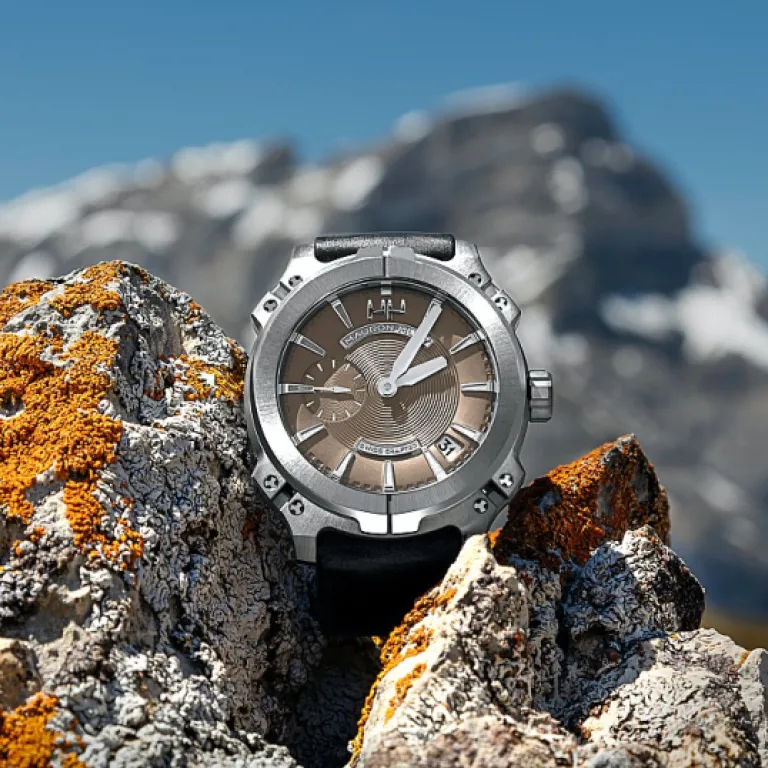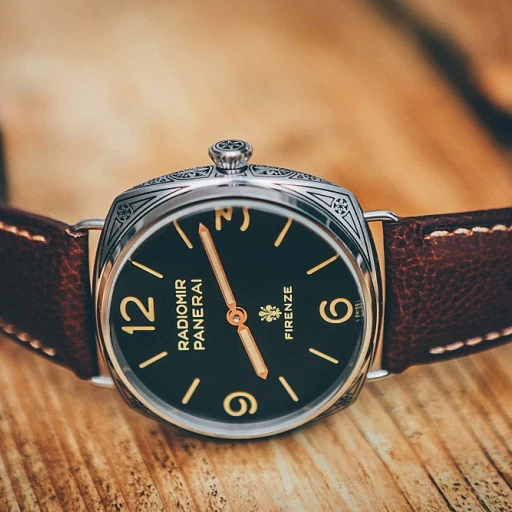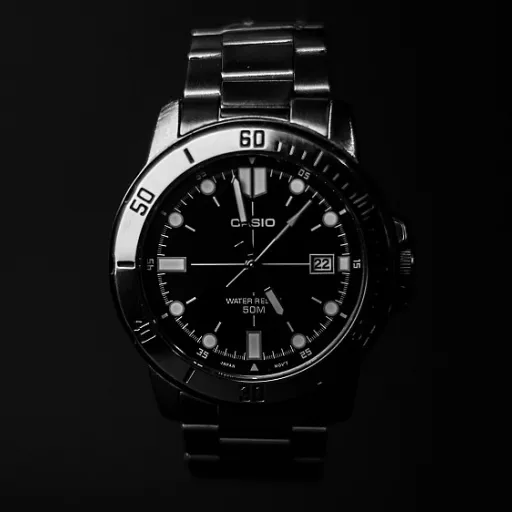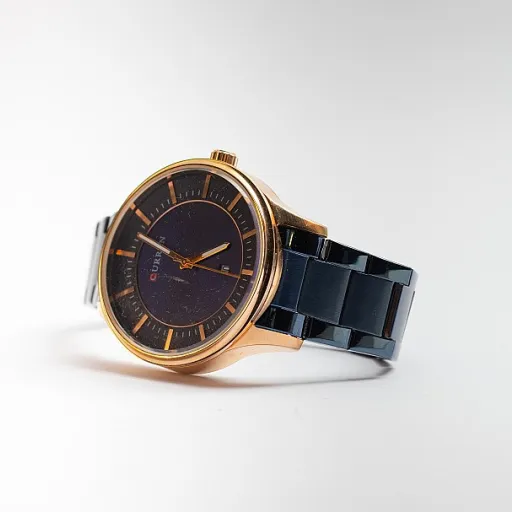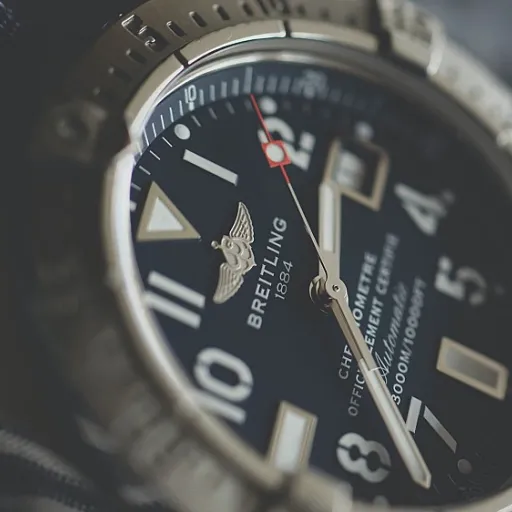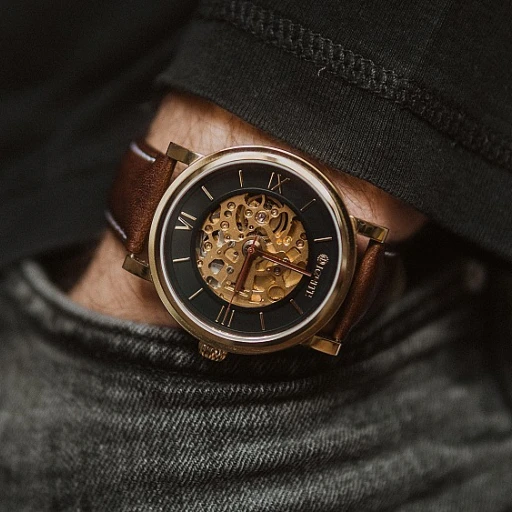
Understanding the artistry behind enamel dials
The meticulous craft of enamel watch dials
For many luxury watch enthusiasts, the allure of enamel dials lies in their remarkable artistry and enduring beauty. The process of creating an enamel dial is a testament to traditional watchmaking, demanding patience, skill, and a deep understanding of materials. Each enamel dial is crafted by applying layers of powdered glass onto a metal base—often gold or silver—then firing it at high temperatures. This technique, known as grand feu, fuses the glass to the metal, resulting in a lustrous, glassy surface that can last for generations.
What sets enamel apart from other dial finishes is its unique ability to capture and reflect light in a way that feels almost alive. The color remains vibrant and consistent over time, resisting fading and discoloration. Whether it’s a deep blue dial or a classic white, the finish is always rich and smooth, with a depth that’s difficult to replicate using other techniques. This is why enamel dials are often found in high-end watches from maisons like Patek Philippe and Audemars Piguet, as well as in select vintage pieces that have stood the test of time.
- Unique character: No two enamel dials are exactly alike, thanks to the hand-crafted process and the unpredictable nature of firing at high temperatures.
- Variety of finishes: Enamel can be combined with guilloche patterns, clous de Paris textures, or even skeleton dial elements for added complexity.
- Iconic examples: The blue enamel dial of the Seiko Presage or the intricate enamel work on a Patek Philippe showcase the range and artistry possible with this technique.
Collectors often seek out enamel dials for their rarity and the prestige associated with the technique. The waiting list for certain enamel dial watches, especially from brands like Rolex Tudor, can be extensive, reflecting their desirability. While enamel is celebrated for its beauty, it’s also important to consider how it compares to other finishes like sunburst or matte dials, which offer their own visual appeal and practical benefits. For a deeper dive into the world of dial aesthetics, including the timeless appeal of silver and black dials, you can explore this guide to silver and black dial watches.
The visual allure of sunburst dials
The captivating play of light on sunburst dials
Sunburst dials have become a signature feature in luxury watches, admired for their dynamic interaction with light. This effect is achieved through a meticulous technique where fine lines radiate from the center of the dial, creating a mesmerizing pattern that shifts as the watch moves. The result is a dial that appears to change color and intensity, offering a unique visual experience every time you glance at your wrist.
Unlike the deep, glossy look of enamel dials, sunburst finishes are all about movement and vibrancy. The technique can be found in a range of colors, but the blue dial sunburst is particularly popular among collectors. When paired with gold or silver cases, the effect is even more striking. Brands like Rolex and Audemars Piguet have mastered this finish, with models such as the Royal Oak and certain Rolex Tudor references showcasing the sunburst dial’s full potential.
- Color versatility: Sunburst dials are available in a spectrum of shades, from classic silver to bold blue and even tropical dial tones.
- Finish options: While sunburst is often glossy, some watches combine it with matte or guilloche textures for added depth.
- Light reflection: The radiating pattern enhances the dial’s interaction with ambient light, making each viewing angle unique.
For those who appreciate vintage aesthetics, sunburst dials often age gracefully, developing subtle patinas that add character. The Seiko Presage line, for example, is renowned for its affordable yet beautifully executed sunburst finishes, while high-end brands elevate the technique with precious metals and intricate details.
It’s also worth noting that sunburst dials can be combined with other decorative elements, such as clous de Paris or skeleton dial features, to create truly unique timepieces. Whether you prefer the understated elegance of a silver dial or the bold statement of a blue sunburst, this finish remains a favorite among luxury watch enthusiasts for its ability to make every watch dial feel alive.
For a deeper dive into how dial finishes complement bracelet designs, check out this article on the elegance of the Jubilee watch band.
Durability and maintenance considerations
Assessing Longevity and Upkeep: Enamel vs Sunburst Dials
When it comes to luxury watches, the durability and maintenance of the dial are crucial factors for collectors and enthusiasts. The choice between enamel and sunburst dials goes beyond aesthetics—each finish brings its own set of strengths and challenges. Enamel Dials: Enduring Beauty, Delicate NatureEnamel dials, especially those crafted using the grand feu technique, are celebrated for their unique, glass-like surface and vibrant color. The process involves firing powdered glass at high temperatures, resulting in a lustrous, smooth finish that resists fading over time. However, this artistry comes with fragility. Enamel can be prone to cracking or chipping if subjected to impact or sudden temperature changes. Vintage enamel dials, for example, are often sought after for their patina, but collectors must be mindful of their delicate nature. Sunburst Dials: Resilience Meets Visual Drama
Sunburst dials, also known as "dial sunburst" or "sunray finish," are created by brushing the metal dial in a radial pattern before applying color. This technique produces a dynamic play of light, especially on blue or silver dials, and is less susceptible to cracking than enamel. Sunburst finishes are generally more robust and easier to maintain, making them a popular choice for daily wear watches from brands like Rolex, Seiko Presage, and Audemars Piguet. Maintenance Considerations
- Enamel dials require careful handling and professional servicing. Cleaning should be minimal to avoid damaging the glassy surface.
- Sunburst dials can be gently cleaned with a soft cloth, but care should be taken to avoid scratches that could disrupt the light-reflecting pattern.
- Both finishes can be affected by moisture, so ensuring the watch’s water resistance is intact is essential.
Collectors may also encounter matte dials, tropical dials, skeleton dials, and guilloche or clous de Paris patterns. Each finish has its own maintenance nuances, but the principles of gentle cleaning and professional servicing apply across the board. For those interested in the technical side of watch upkeep, especially for movements like the Sellita SW500 often found in luxury timepieces, mastering calibration is key to preserving both function and value. For a detailed guide, see how to calibrate your Sellita SW500 movement. Ultimately, whether you choose the timeless elegance of an enamel dial or the modern resilience of a sunburst finish, understanding the care each requires will help maintain your watch’s unique allure and value.
How dial choice influences watch value
Impact of Dial Craftsmanship on Watch Value
For luxury watch enthusiasts, the choice between enamel and sunburst dials goes far beyond aesthetics. The dial’s technique, finish, and rarity play a significant role in determining a watch’s value, both at retail and on the secondary market.
- Enamel dials are often associated with high-end brands such as Patek Philippe and Audemars Piguet. The grand feu technique, which involves firing at high temperatures, creates a unique, lustrous finish that resists fading over time. Because each enamel dial is crafted by hand, no two are exactly alike, making them highly sought after by collectors. This artisanal process, combined with the rarity of skilled enamelers, can significantly increase a watch’s value.
- Sunburst dials, on the other hand, are prized for their dynamic play with light. The radial brushing technique creates a vibrant effect, especially on blue or silver dials. While sunburst finishes are more common than enamel, certain models—like the Royal Oak with its blue dial sunburst or vintage Rolex with a silver sunburst dial—can command premium prices, especially if paired with gold cases or unique color variations.
Other dial finishes, such as matte, tropical, skeleton, or guilloche (like clous de Paris), also influence value. For example, a rare matte dial on a vintage Rolex Tudor or a skeleton dial watch from a limited edition can drive up demand and price, especially if the watch is on a waiting list.
Ultimately, the value of a watch is shaped by the interplay of technique, rarity, and brand prestige. Whether you’re drawn to the timeless artistry of enamel or the modern allure of sunburst, understanding these factors will help you make informed decisions for your collection.
Iconic timepieces featuring enamel and sunburst dials
Legendary Watches That Showcase Dial Mastery
When it comes to luxury watches, certain models have become icons thanks to their dials. Whether it’s the mesmerizing depth of an enamel dial or the dynamic play of light on a sunburst finish, these timepieces are often at the top of collectors’ wish lists. Let’s look at some standout examples that highlight the artistry and technique discussed earlier.- Patek Philippe Grand Feu Enamel Dials: Patek Philippe is renowned for its use of the grand feu technique, where enamel is fused at high temperatures to create a dial with remarkable depth and color. These dials are not only beautiful but also highly valued for their craftsmanship and rarity. The process results in a unique, almost glass-like surface that stands the test of time.
- Rolex Sunburst Blue Dials: The sunburst finish is a signature of many Rolex models, especially in their blue dial variants. The way light dances across the dial, shifting from deep blue to lighter shades, is a hallmark of the brand’s attention to detail. This technique is also seen in the silver dial versions, offering a different but equally captivating effect.
- Audemars Piguet Royal Oak with Tapisserie and Sunburst Finishes: The Royal Oak is famous for its guilloche “clous de Paris” pattern, but some limited editions feature a sunburst dial that adds another layer of visual intrigue. The interplay between the geometric guilloche and the radiating sunburst finish creates a dial that’s both classic and contemporary.
- Seiko Presage Enamel and Sunburst Dials: Seiko Presage lines offer both enamel dials and sunburst finishes at a more accessible price point. Their enamel dials are handcrafted, while their sunburst dials—especially in blue—demonstrate how this technique can elevate even non-precious metal watches.
- Vintage Watches with Tropical and Matte Dials: Over time, some dials develop a unique patina, known as a tropical dial, or retain a matte finish that collectors find irresistible. These vintage pieces, whether featuring enamel or sunburst techniques, often command a premium due to their rarity and the stories behind their finishes.
| Watch | Dial Type | Notable Feature |
|---|---|---|
| Patek Philippe Grand Feu | Enamel | High-temperature grand feu technique, unique color depth |
| Rolex Oyster Perpetual | Sunburst | Blue dial, dynamic light reflection |
| Audemars Piguet Royal Oak | Guilloche & Sunburst | Clous de Paris pattern, sunburst finish |
| Seiko Presage | Enamel & Sunburst | Handcrafted enamel, affordable sunburst options |
| Vintage Rolex Tudor | Matte/Tropical | Unique patina, collector’s appeal |
Making the right choice for your collection
Personal Taste and Lifestyle: The Deciding Factors
When it comes to selecting between enamel and sunburst dials, your personal style and how you intend to wear your watch play a significant role. Some collectors are drawn to the classic, almost ethereal beauty of enamel dials, especially those crafted using the grand feu technique at high temperatures. Others are captivated by the dynamic play of light on a sunburst finish, which can make a blue dial or silver dial appear to shift in color throughout the day.
- Enamel dials are ideal for those who appreciate tradition, craftsmanship, and a unique, almost vintage appeal. These dials are often found in high-end pieces from brands like Patek Philippe and Audemars Piguet, and their labor-intensive process ensures each watch dial is truly one of a kind.
- Sunburst dials offer a more contemporary look, with finishes that highlight the watch’s interaction with light. This technique is popular in models like the Seiko Presage and the iconic Royal Oak, where the dial sunburst effect enhances the overall presence of the watch.
Investment and Collectibility
Value retention is another aspect to consider. Enamel dials, due to their rarity and the skill required to produce them, often command a premium on the secondary market. Watches with enamel dials, especially those featuring guilloche or clous de Paris patterns, are highly sought after by collectors. Sunburst dials, while more common, can also be valuable—particularly when paired with unique colors like blue or gold, or when featured in limited editions from brands such as Rolex or Rolex Tudor.
Practical Considerations
Think about how you will use your watch. Enamel dials are delicate and may require more careful handling, especially compared to robust matte or skeleton dials. Sunburst finishes, on the other hand, are generally more forgiving for daily wear, though they can show scratches more easily than a matte dial or a tropical dial.
Building a Diverse Collection
Many enthusiasts find joy in curating a collection that spans multiple dial techniques and finishes. For example, pairing a classic enamel dial watch with a modern sunburst blue dial or a gold dial with a guilloche finish can add depth and variety to your collection. Whether you’re drawn to the artistry of enamel or the vibrant energy of a sunburst finish, the right choice will reflect your taste and the stories you want your watches to tell.
